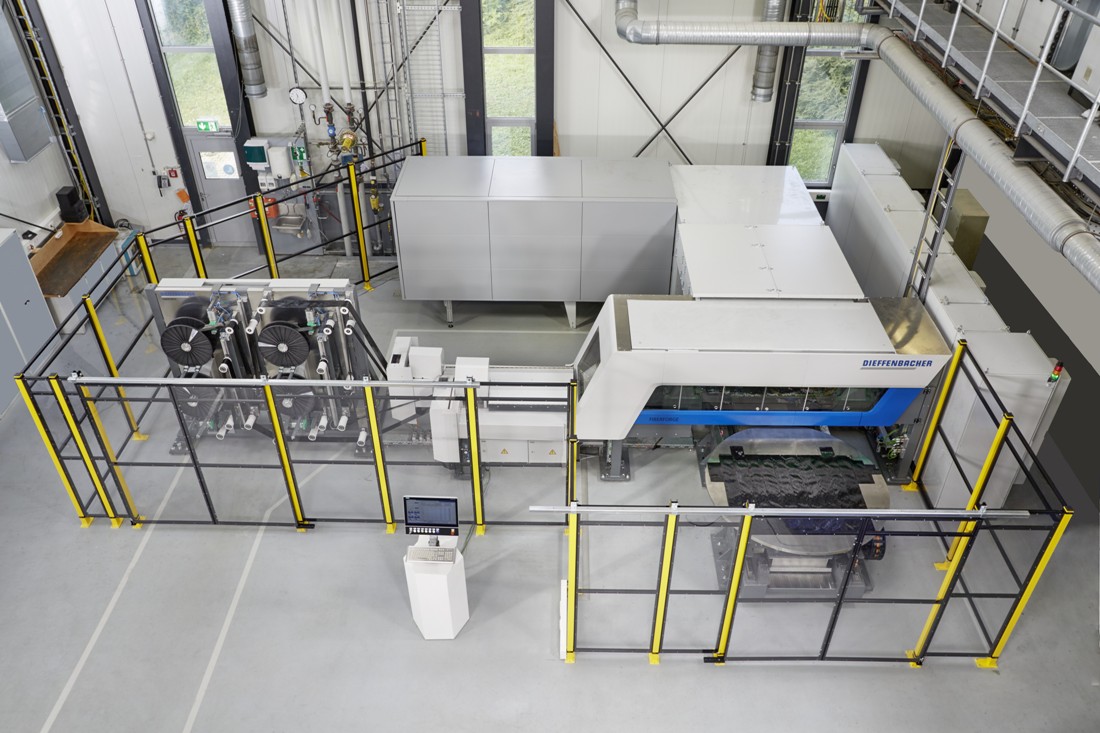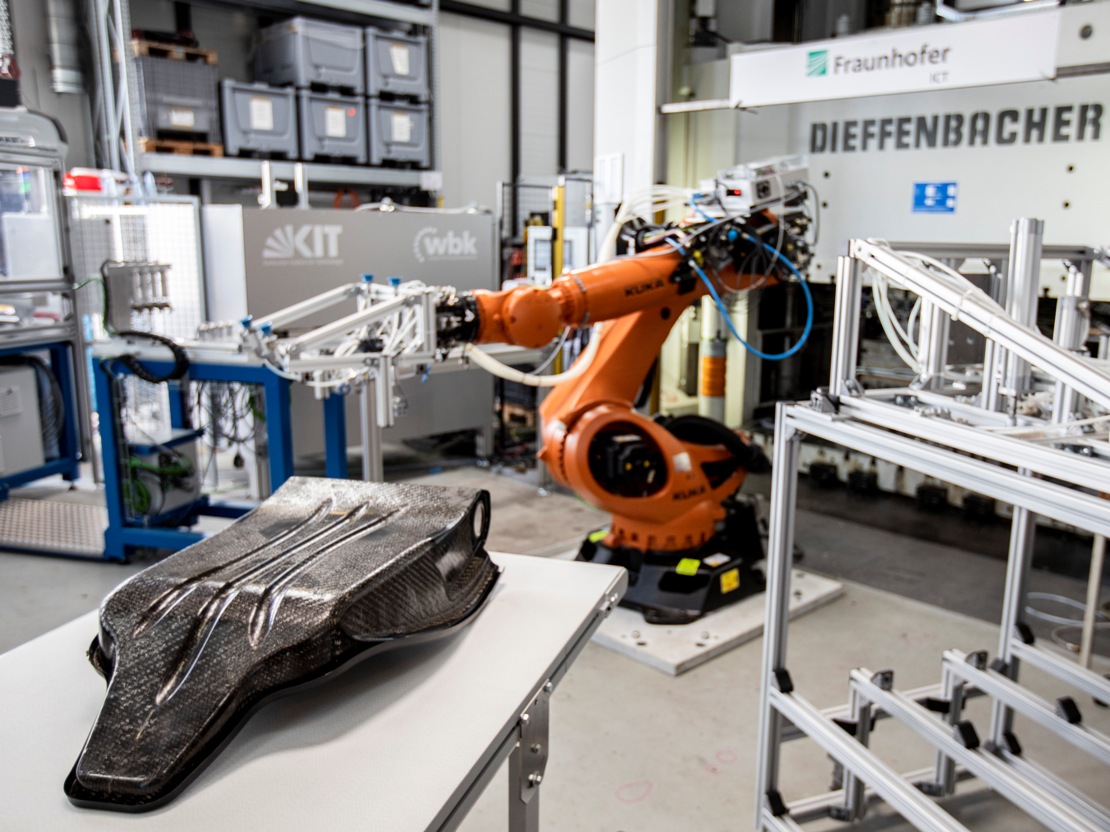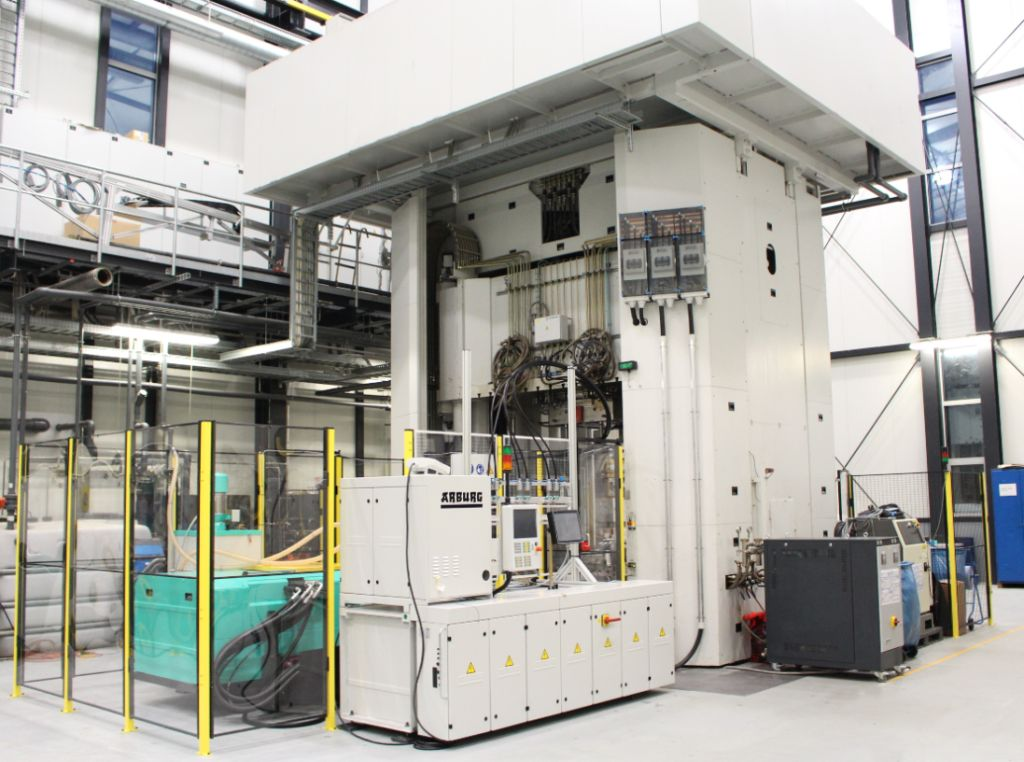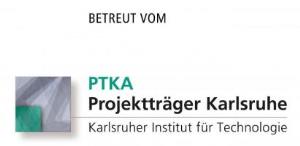MO·PA·HYB
Modular production plant - Economical manufacturing of high-performance hybrid structures
Hybrid structures have significant potential for lightweight applications. However, this material class places the highest demands on manufacturing processes, resulting in cost-intensive cost-intensive manufacturing solutions. Due to the growing demand for individualized products, variant diversity and therefore small batch sizes, this currently leads to a lack of economical manufacturing solutions.
Together with 13 partners from industry and R&D, Fraunhofer ICT has developed amodular production plant concept to over-come this obstacle. The new control system is based on a “plug & work“ architecture featuring unified hard- and software inter-faces. The OPC Unified Architecture (UA) communication protocol is used to ensure future-oriented communication indepen-dent of the manufacturer and platform. A fully functional pilot plant on industrial scale has been installed at Fraunhofer ICT to demonstrate the full potential of this new approach. The focus is on retooling options to achieve an enhanced variety of parts, which are manufactured by replacing individual production modules.
Integrated production modules combining different process technologies
- Siemens basic module, centralized control unit
- Dieffenbacher Fiberforge tape-laying module, thermoplastic UD tape-laying
- Bold-on Arburg SPE4600 injection molding module with integrated FPC unit in combination with Dieffenbacher hyd-raulic press module, co-injection molding
- KIT-wbk IR-heating module, heating of semi-finished products
- Kuka handling module with flexible gripper technology from J. Schmalz and KIT-wbk, automated handling
- A. Raymond highly flexible feeding of metallic load-introduction elements
- Vitronic quality assurance modules
- Trumpf metallic reinforcing elements module
Seat backrest – process route 1
- Glass-fi ber-reinforced organo-sheet with PA-6 matrix, locally patched with carbon fi ber-reinforced UD tape
- Glass-fi ber-reinforced ribs and functional elements produced in co-injection molding using Arburg‘s FDC direct compounding process
- Metallic inserts for load introduction and reinforcement
Car underbody segment – process route 2
- Carbon-fi ber-reinforced UD tape structure PA-6 matrix produced with automated tape-laying in most highly loaded areas within underbody segment
- PA-6 glass-fi ber-reinforced rib structure produced in compression molding using Dieffenbacher‘s D-LFT direct compound-ing process
Validation of concept
To validate the new plant and control architecture, two different process routeshave been developed. A special focus was the demonstration of the retooling capabilities of the overall set-up. Twodemonstrator parts were used: a seat back-rest, for which injection molding is the main intrinsic hybridization process, and a car underbody segment manufactured in co-compression molding. Both process routes require a change of production modules to manufacture the desired parts. The ret-ooling from one process route to another could be achieved within a few hours.
 Fraunhofer Institute for Chemical Technology ICT
Fraunhofer Institute for Chemical Technology ICT



